E-Bikes
Photo by Stephen Matera, courtesy IZIP
Electric bicycles or electric-assist bicycles, commonly called e-bikes, are similar to standard bikes in appearance and operation but feature a small electric motor. The motor assists the rider by adding power to the wheels. Broadly speaking, e-bikes are either pedal-assist, meaning the motor is engaged by pedaling and cuts off at a designated top speed, or throttle-on-demand, with which the motor can propel the bike even if the rider is not pedaling.
It is the existence of a motor which explains why so many authorities at state and local levels struggle to classify these vehicles—whether as bicycles or as motorized vehicles like mopeds or motorcycles. How they are classified in turn informs how they are regulated. Among other restrictions, motorized vehicles (with the exception of personal mobility devices, such as electric wheelchairs) are often prohibited from shared use trails.
Although some in the cycling community approach the idea of a motor-powered bicycle with skepticism, these bikes are actually growing in popularity. Market research shows that sales of electric bicycles in the United States totaled $65 million in 2016-17, a 95% increase over the previous 12 months. This growth is despite the high cost of e-bikes when compared to their traditional counterparts, which can serve as a deterrent to some potential users. But it’s not just individuals buying in: 1 in 4 bikes in Birmingham, Alabama’s bikeshare fleet are e-bikes, and dockless bikeshare providers have made e-bikes available to residents and visitors of several cities across the United States.
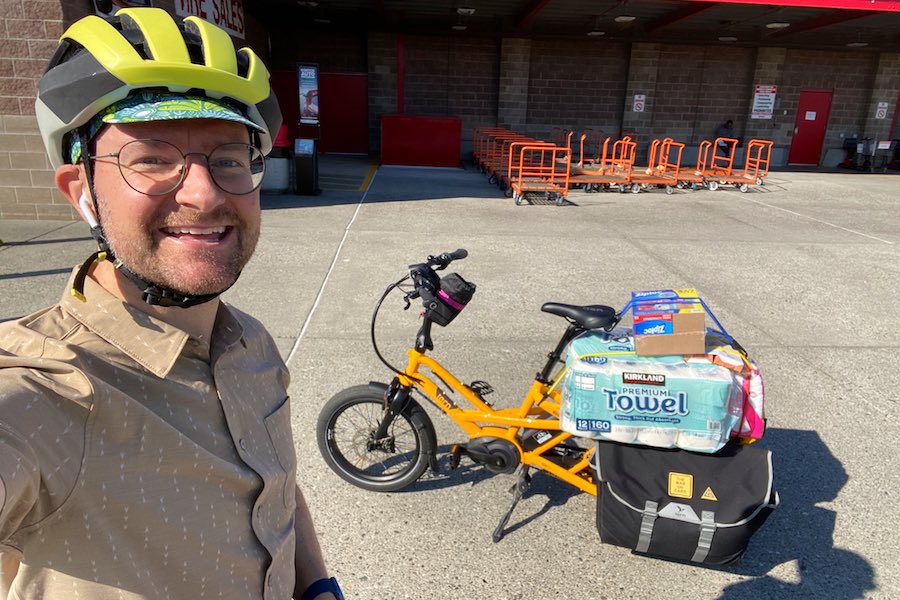
Proponents argue that with an e-bike, barriers to cycling such as hilly topography, long distances to destinations and the need to carry children or cargo—and the associated exertion and sweating—can be overcome. This enables people to make trips by bike that they might not have otherwise, substituting e-bikes in place of other modes, including cars.
There is no doubt that electric bicycles are quieter and better for the environment than gas-powered vehicles. While there is debate about whether the health benefits of riding a pedal-assist bike are comparable to those from riding a conventional bike, e-bikes can act as a gateway to biking for sedentary or unconfident users.
Perhaps most significantly, e-bikes can grant people with physical limitations new recreation or transportation options. Indeed, the National Institute for Transportation and Communities’ (NITC) 2017-18 survey of e-bike owners indicates that the bikes not only appeal to the young and the able-bodied, but also to older riders and persons with disabilities, health issues or injuries who still wish to be able to bike for recreation.
Classification
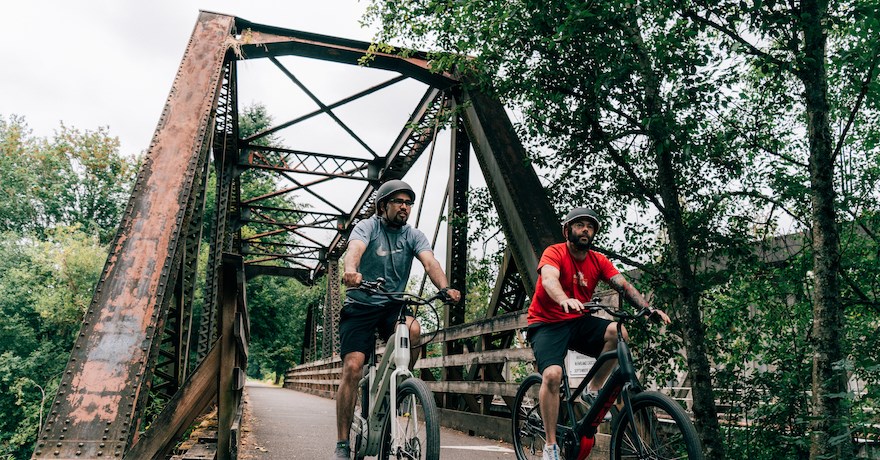
The bike industry has developed a three-tier classification system for e-bikes to clearly delineate them from other motorized vehicles. This system is based on the power source and maximum assisted speed of the bicycle.
Class I e-bikes are those in which the motor provides a boost only when a rider is pedaling. The boost cuts out at 20 miles per hour (mph), and the rider must rely on their own muscle power to go any faster than that.
Class II e-bikes are those in which the throttle can be switched to provide a boost up to a maximum assisted speed of 20 mph, without any pedaling required. The boost cuts out at 20 mph, and the rider must rely on their own muscle power to go any faster than that.
Class III e-bikes are pedal-assist like Class I’s, except they have a maximum assisted speed of 28 mph. They are also equipped with a speedometer.
Typically, where e-bikes have been allowed off-road on multiuse trails, they have been Class I’s and Class II’s, and are subject to the same rules and regulations that govern other cyclists.
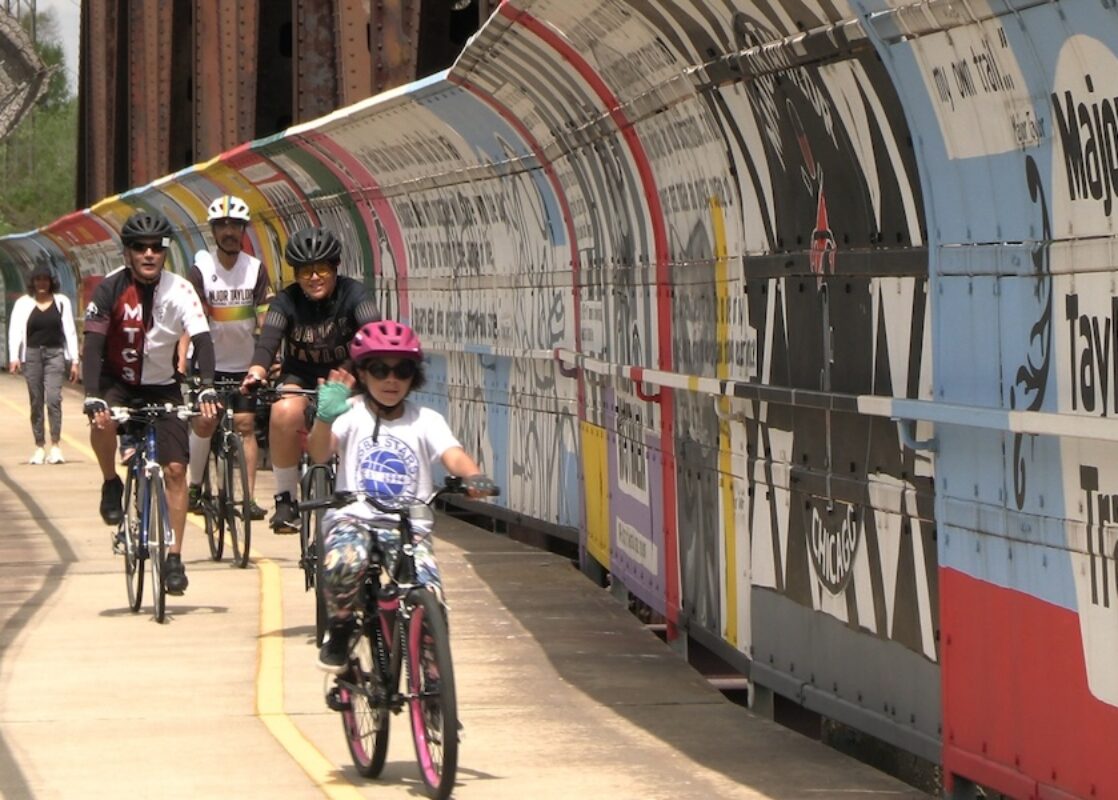
Donate
Everyone deserves access to safe ways to walk, bike and be active outdoors.
Regulation of E-Bikes
Federal Policy
Federal regulation of electric bicycles is the responsibility of the Consumer Product Safety Commission (CPSC), which regulates the manufacture, initial sale and recall of low-speed e-bikes with a maximum speed of 20 mph under throttle. Critically, CPSC regulation of e-bikes does not include their usage.
According to the CPSC, a low-speed e-bike is defined as “a two- or three-wheeled vehicle with fully operable pedals and an electric motor of less than 750 watts (1 horsepower), whose maximum speed on a paved level surface, when powered solely by such a motor while ridden by an operator who weighs 170 pounds, is less than 20 mph.“
Electric bikes which do not meet this low-speed definition may be subject to other regulations at the federal, state and local level, such as those governing mopeds, scooters or motorcycles.
State Policy
The National Conference of State Legislatures provides a primer of the state laws relating to electric bicycles. From that data:
- 31 states and the District of Columbia have a law defining e-bikes. In most cases, the bikes are considered distinct from motorized vehicles.
- 19 states gave no definition of e-bikes and are likely to classify them as motorized vehicles, typically with all the licensing and registration requirements implied therein. Since motorized vehicles are typically not allowed on multiuse trails, this precludes their use on these facilities, as well as in bike lanes and on sidewalks.
- Some states have instituted age restrictions on the use of e-bikes. And some states mandate helmet use while others do not.
E-bikes on Multiuse Trails
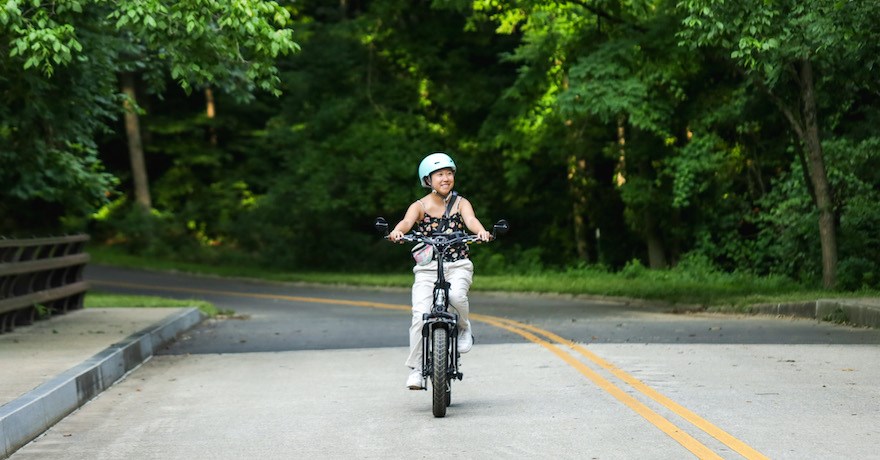
Pilot Programs
In Colorado, state law classifies electric bicycles as bicycles, a “default” used across the state unless the local jurisdiction wishes to make its own regulations. In 2014, following this change to state policy, the City of Boulder introduced a year-long pilot program in which Class I and II e-bikes were allowed on certain hard-surface trails to investigate the behavior of e-bike users and whether they were compatible with other non-motorized uses. During the pilot, the City collected safety data on reported collisions and close-calls involving e-bikes on these trails. They also conducted outreach to solicit public opinion and educate the public about the study.
The City found that there were few e-cyclists among the population of trail users, and there were no reports of bike collisions during the study period. Confident about the safety of e-bikes, the City of Boulder adopted a rule allowing their use on paved trails within the city while banning them from trails in designated open-space areas. The city website hosts a downloadable map of all trails on which e-bikes can be used. In addition, the City partners with a local trail advocacy group to educate users on trail etiquette.
The Boulder approach inspired other cities to attempt their own e-bikes-on-trails pilot programs:
Park City, Utah, performed their pilot in 2015, limiting Class I and II e-bikes to paved trails wider than eight feet within city limits. The City added signage at trailheads to indicate where e-bikes were allowed or prohibited. The pilot included a data-collection component, with the City performing trail counts, field observations, intercept surveys and speed counts, as well as reviewing police reports; and an outreach-and-education component using traditional media, a dedicated website and an online survey. Today, the City allows electric bicycles on all paved multiuse trails, as well as on soft-surface trails wider than five feet with a 15-mph speed limit for all users. A map of trails where e-bikes are permitted is available on the city website.
In addition, Park City introduced Summit Bike Share in 2017, a bikeshare with exclusively pedal-assist e-bikes, available to be rented by residents 18 years and older.
In Seattle, Washington, five trails were chosen to be part of the trial period for Class I and II e-bikes in response to the city’s hilly topography, availability of dockless bikeshare e-bikes and changes to state law allowing electric bicycles on multiuse paths. The program began in August 2018 and ran for one year; as of November 2019, the pilot results were under review. Seattle Parks and Seattle Police will collaborate on the enforcement of trail rules, which may include a speed limit of 15 mph.
Other Examples
Some cities have allowed e-bikes on their multiuse trails without first running a pilot program. Boise, Idaho, revised its bicycle laws in 2017 to allow Class I and II e-bikes to be operated on streets, bike lanes, sidewalks and on the Boise River Greenbelt. For the mountain biking trails in the Boise Foothills, only persons with mobility impairments are allowed to use e-bikes.
Earlier that same year, the City of Tempe, Arizona, adopted an ordinance which, among other things, permitted use of electric bicycles on multiuse trails at a top speed of 20 mph. E-bikes must yield to pedestrians and equestrians and slow to 5 mph when passing. Riders must also be 16 or older, and riders between 16-18 have to wear helmets.
The influx of dockless bikeshares and electric scooters inspired Scottsdale, Arizona, to mull over the parking and operating codes for these vehicles. As of December 2018, Class 1 and 2 bikes, as well as e-scooters, are allowed on shared use trails.
The state of Arizona officially adopted the three-tier classification system for electric bicycles in January 2019. The new law also allows e-bikes with a top speed on 20 mph to be used on any trails statewide, with flexibility for local authorities to decide whether to restrict or allow e-bikes on trails within their own footprints.
E-bike Stories
View more E-bike Blogs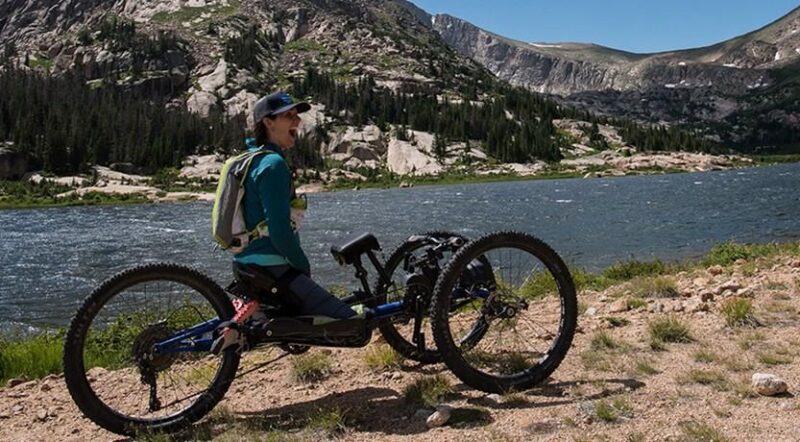
Trail Moments | Adventure for All: Advocating for Accessible Outdoor Spaces
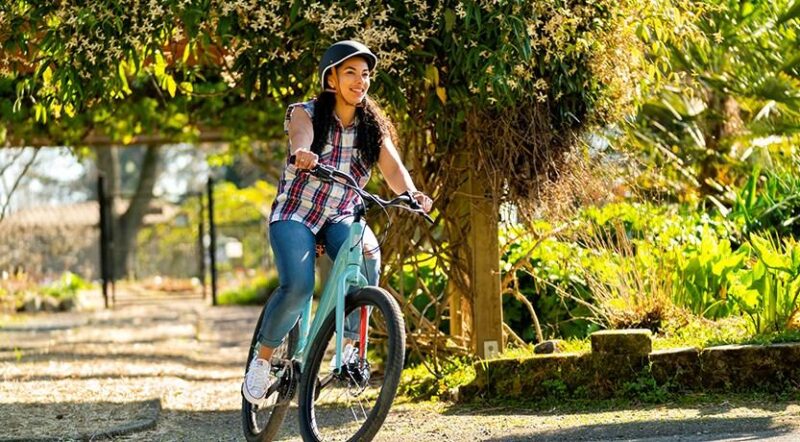
Exploring America’s E-Bike Evolution
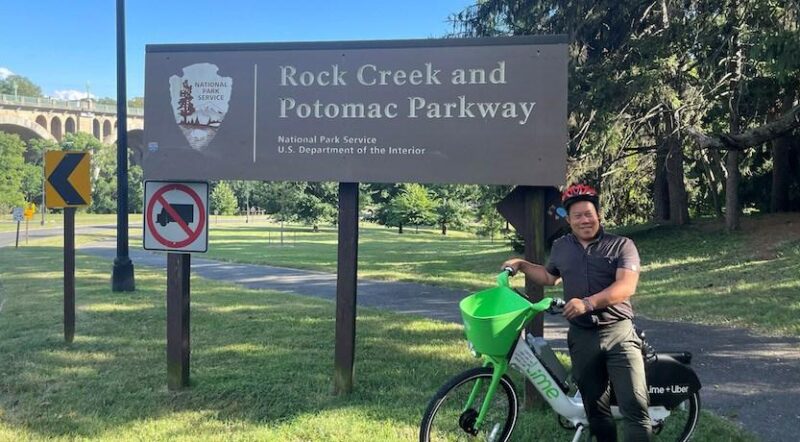
#TrailMoments with Albert Ting (@pootie_ting)
Safety, Speed and User Conflicts
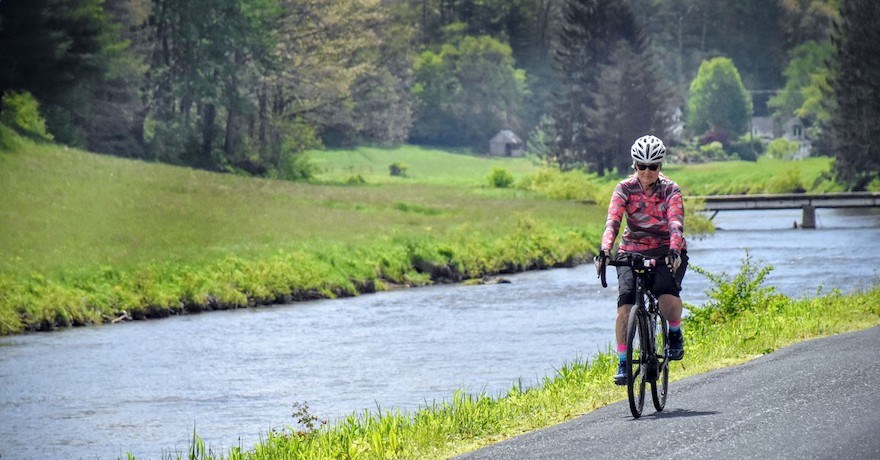
The prevailing concern about allowing electric bicycles on trails is the question of safety—particularly related to speed. The perception is that motor-assisted riders will race down trails, making them dangerous and unpleasant for other types of users.
However, a study conducted in Switzerland showed that while average speeds of cyclists on e-bikes were higher than those using traditional bikes (14 mph vs. 8.7 mph), the top speed of most e-bike users was usually well below 20 mph.
Moreover, the issue of speeding is not peculiar to electric bicycles. Many a trail user can attest to being startled by cyclists blowing past them at unsafe speeds.
User conflicts are an unfortunate but expected reality of multiuse trails, where a variety of user types share a fairly constrained space. As with other types of user conflicts, maintaining safety on a trail is often better accomplished by enforcing proper behavior rather than strictly regulating the equipment used. If e-bikes are allowed on a trail, they should conform to the existing rules of the trail and norms of trail etiquette including:
- Maintain safe speeds. Heed all posted speed limits.
- Keep right, pass left and call out as you do.
- Yield to pedestrians, equestrian users and other slower trail users.
Resources
‣ Report – Conflicts on Multiple-Use Trails
‣ Fact Sheet – Share the Trail Brochure
TrailNation Collaborative
TrailNation™ Collaborative is a nationwide peer learning community from Rails to Trails Conservancy that brings together advocates, leaders and professionals from across disciplines to establish and accelerate trail networks across America. The collaborative provides proven tools, methods and resources, combined with RTC’s expertise and network of partners across the country, to accelerate the development of connected trail systems. When trails are connected across regions and states, trail networks have a proven transformative impact—they are essential infrastructure that creates thriving, healthier communities.